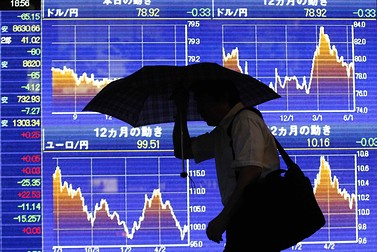
Dow skyrockets near 20,000 by 2014? In two years? Then crashes near 10,000 by 2016 presidential elections? Possible? You bet. Déjà vu 2007-2008.
So what’s your biggest risk as an investor? Listening and acting on the relentless manipulative B.S. from Wall Street’s media bulls in the next few years.

Last week USA Today suggested the stock market will soon set a new record high, “How high? How about an all-time high in six months, 16% higher in 12 months, almost 40% higher two years from now.” Yes, 40% said one bullish technician with a mega-bullhorn sounding the rally call for all bulls: “Now is the time to finally break out” of today’s secular bear market.
New secular bull market driving stocks up 40% in just two years, by 2014? Yes, halfway through the next presidential term the DJIA would have to rocket past the 2007 peak of 14,164 to a record close just under 20,000, ignoring GOP leaders warnings that gridlock of all tax, jobs and economic programs will continue if Obama is reelected.
Now compare that with my recent report that says the Dow would drop 20% by 2016,down near 10,000. But it’s not really an impossible scenario: The U.S. stock market could rise near 20,000 in the first two years of the next presidential term. Then by 2014, a global crisis could sink the Dow to 10,000 by the 2016 presidential elections, like 2008.
Wall Street never learned lessons of 2008, so we’re doomed to repeat
Repeating? Yes. Here’s why today’s stock market parallels the 2007-2008 run-up to Wall Street’s disastrous subprime credit meltdown. Remember, the Dow hit 14,164 in October 2007. Then lost more than 50% of market value, crashing to around 6,600 in March 2009. Get it? Lots can happen in two years. And unfortunately technicians can’t fit this kind of macro-volatility into their myopic equations.
How do I know? Earlier when I was publishing my own financial newsletter I developed a healthy skepticism of predictions made by technicians. One day with a commodities trader, after watching his two-minute ticker moves, I asked him about predicting the market two weeks down the road: No can do. Besides, they don’t want to. Like today’s high-frequency traders, they think short-term, in minutes, micro-seconds, not weeks.
Besides, too many variables. It’s tough enough just focusing on short-term technical numbers. In the process, they have to minimize other key analytical tools — fundamental analysis, MPT and macroeconomic trends — and speculate on Fed policies, fiscal cliffs, internecine partisan political wars, jobs, terrorist attacks, China’s exports, and so many other technically less-quantifiable big-picture factors for long-term predictions.
Warning: 93% of Wall Street’s message intentionally misleading B.S.
So if you remember nothing else today, here’s your big take-away: You can never trust Wall Street bulls, they’re lying to you 93% of the time. Studies tell us analysts signal “buys” vastly more than “sells.” And behavioral-science research tells us that bankers, traders and other market insiders are misleading us, manipulating us 93% of the time in their securities reports, PR, ads, speeches, sales material, in their predictions on television, cable shows and when quoted in newspapers and magazines.
Get it? It’s 13-times more likely that Wall Street’s telling you a lie than the truth. Yes, they’re manipulating you 93% of the time. They know your brain’s easy to manipulate. That’s just what they do. They can’t help themselves in today’s highly competitive world. And they’ll never change. So they always win, you always lose.
17 stupid statements bulls make to deny a bear recession
You have to “tune your B.S. detector to high,” as the great financial adviser Jane Bryant Quinn says in her classic “Making the Most Out of Your Money.” Quinn’s warning was reinforced with the publication of “Bull! 144 Stupid Statements from the Market’s Fallen Prophets,” which hit the book stores near the end of the 30-month recession a decade ago, after $8 trillion of the retirement money for 95 million Americans was wiped out.
We picked 17 of the stupidest statements made by Wall Street’s leading minds to illustrate their tendency 93% of the time to mislead and manipulate investors using hype, happy talk and pure biased B.S.
….read page 2 HERE












